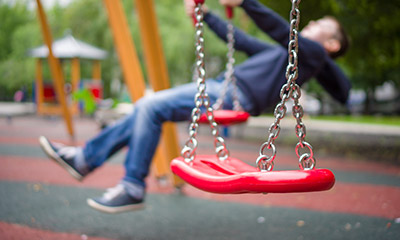
Imagine a world without playgrounds or outdoor recreational spaces. No slides, no swings, no fun! Thankfully, these spaces do exist and are designed to provide children and adults alike with a safe and enjoyable environment. One crucial aspect of creating safe play areas is understanding the concept of critical fall height and how this impacts the choice of surfacing.
What is Critical Fall Height?
Critical fall height refers to the maximum height from which an individual can fall onto a particular surface without sustaining a severe injury. In simpler terms, it measures the capability of surfacing materials to absorb impacts, cushion falls, and reduce the risk of serious harm.
Why is surfacing important?
When it comes to designing playgrounds or outdoor recreational areas, surfacing plays a vital role in ensuring the safety of its users. Whether it’s a child slipping from a jungle gym or an adult losing balance while playing sports, accidents can happen. Hence, surfacing materials need to be carefully selected to minimise the risk of injury.
CONTACT Limegate
Which factors affect Critical Fall Height?
Several factors influence the critical fall height of a given surface, including material type, thickness, and its ability to absorb impact. Let’s take a closer look at each of these factors:
Material type
Different surfacing materials possess varying levels of impact-absorbing properties. Some commonly used materials include rubber, wood chips, sand, gravel, and engineered wood fibre. Each material has its own advantages and limitations when it comes to providing protection against falls.
Thickness
The thickness of the surfacing material is a critical factor in determining its impact absorption capabilities. Thicker surfaces generally offer better protection by providing a greater cushioning effect during falls.
Impact absorption
The ability of a surface to absorb impact is a fundamental characteristic that determines its critical fall height. Surfaces with high impact-absorbing properties can effectively dissipate the energy generated during a fall, reducing the risk of injury.
What are the safety standards and regulations?
To ensure the highest level of safety in playgrounds and outdoor recreational spaces, various safety standards and regulations have been established. In the UK, surfacing contractors must adhere to guidelines set by the British Standards Institution (BSI). These standards outline the critical fall heights and impact attenuation requirements for different types of surfacing materials.
Choosing the right surfacing material
Selecting the appropriate surfacing material is crucial to meet safety standards and provide adequate protection. It’s essential to consider factors such as the intended use of the area, user age groups, and budget constraints. Consulting with experienced surfacing contractors can help in making an informed decision based on your specific requirements.
Creating safe play areas and recreational spaces is of utmost importance, and understanding the concept of critical fall height is a significant step towards achieving this goal. By carefully selecting suitable surfacing materials and ensuring compliance with safety standards, we can minimise the risk of severe injuries due to falls. Remember, every fall counts, and providing a safe environment for everyone to enjoy is a responsibility we must embrace. To learn more about different surfacing options and ways to increase the critical fall height of your surface, speak to the experts at Limegate on 01959 546 208.


